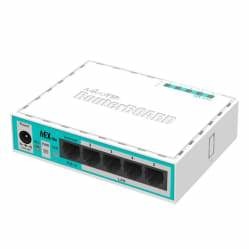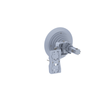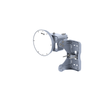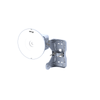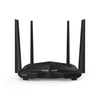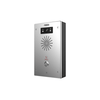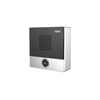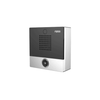Wired Networking
What is a Network Cable?
Broadly speaking, a network cable is a type of cable wiring used in telecommunications that relays data from individual computers to a larger network mainframe.
Is a network cable and ethernet cable the same thing?
Only network cables that used in Ethernet environments (LAN, MAN, WAN) are called Ethernet cable. Ethernet cable usually exclusively refers to a copper or aluminium cable. However, network cable refers to a large range of cable types such as patch cable and glass optical fibre.
What is a network cable used for?
Network cables are used to connect and transfer data and information between computers, routers, switches and storage area networks. These cables are essentially the carrier or media through which data flows.
what is a standard network cable?
Category 5 cable (Cat 5) is a twisted pair cable for computer networks. ... The cable standard provides performance of up to 100 MHz and is suitable for most varieties of Ethernet over twisted pair up to 1000BASE-T (Gigabit Ethernet). Cat 5 is also used to carry other signals such as telephony and video.
Network cable price
The pricing will all depends from manufacturer to manufacturer depending on the current copper price.
Network cables south Africa - www.switchcom.co.za.
How long can a network cable be?
Generally, the longest you should try to run an Ethernet cable is 90-100 meters. Electrical signals degrade over long distances, especially when you're talking super-thin wires like the ones in Ethernet cables. The faster we push data, the more sensitive the data becomes to that degradation
Network cable tester
Network Cable Tester is a device designed to measure and test existing LAN connection. LAN Testers are a must-have piece of equipment for every network installer. Whatever it is an existing cable connection troubleshooting or installation brand new cable connections, cable tester checks the signal quality and point at exact cables or cores that need an attention.
Which network cable is the best?If you have gigabit internet, an old Ethernet cable will hold you back. But if you have a slower connection, say 10 or 20 megabits per second, you're good with anything Cat 5 or newer. Next, consider the speed you need for your network.
Which network cable should I use?
If you have gigabit internet, an old Ethernet cable will hold you back. But if you have a slower connection, say 10 or 20 megabits per second, you're good with anything Cat 5 or newer. Next, consider the speed you need for your network.
Different Colours
Straight network cable colour code
Straight-through cable is a type of twisted pair copper wire cable for local area network (LAN) use for which the RJ-45 connectors at each end have the same pinout (i.e., arrangement of conductors). ... Crossover cable is used to connect two like devices without the use of an uplink port.
Network cable colours
Grey-coloured cables typically represent standard ethernet connections, while green cables represent crossover ethernet connections. Yellow cables are used to signify POE (power over ethernet), while blue cables are used for terminal server connections
Network cable wiring
The TIA/EIA 568-A standard which was ratified in 1995, was replaced by the TIA/EIA 568-B standard in 2002 and has been updated since. Both standards define the T-568A and T-568B pin-outs for using Unshielded Twisted Pair cable and RJ-45 connectors for Ethernet connectivity.
Network cable connector
A connector is a device that terminates a segment of cabling or provides a point of entry for networking devices such as computers, hubs, and routers.
How can I test my network cable?
Purchase an Ethernet cable tester. There are many models you can purchase. Plug one end of the cable into the transmit jack. The transmit jack on the tester maybe be labelled "TX". Plug the other end of the cable into the receiver jack. The receiver jack may be labelled "RX" on the device. Check the lights on the tester. Check the lights on the tester.
Which network cable is the fastest?
Cat 7 cables are the latest to hit the networking market and enable speeds of up 10 gigabits per second.
What is the best network cable to use for gaming?
Although Cat5e and Cat6 are both good choices for gaming over Ethernet connections, Cat6 cables are often the preferred type. This isn't necessarily because of speed, however since 1000Mbps is fine for most gamers. Cat6 cables are better at handling interference than Cat5e cables.
What is an Ethernet cable?
An Ethernet cable is a common type of network cable used with wired networks. Ethernet cables connect devices such as PCs, routers, and switches within a local area network. These physical cables are limited by length and durability. If a network cable is too long or of poor quality, it won't carry a good network signal. These limits are one reason there are different types of Ethernet cables that are optimized to perform certain tasks in specific situations.
How fast is my ethernet cable?
The current IEEE 802.3bz standards for Ethernet are 2.5 Gbps for 2.5GBASE-T and 5 Gbps for 5GBASE-T. It won't be long until standard speeds will reach up to 10Gbps on a Cat6 cable. Cat5e can deliver speeds of 1 Gbps
What ethernet cable is best?
If you have gigabit internet, an old Ethernet cable will hold you back. But if you have a slower connection, say 10 or 20 megabits per second, you're good with anything Cat 5 or newer. Next, consider the speed you need for your network.
How far can I run ethernet cable from router?
Typically, for 10/100/1000 mbps links, 100 meters (approx. 300 ft.) is the maximum length for cables with Cat5e or better. A 10 gbps link requires Cat6 cabling for up to 55 meters or Cat6a for up to 100 meters.
Wifi network cable
The cable WiFi project brings a whole new definition to the term cable Wi-Fi. It is no longer just about setting up a wireless router and connecting to your cable Internet service for wireless access. ... Others offer passes that allow you to access high speed Internet on an hourly basis, by the day, or on a weekly rate.
What is the difference between indoor and outdoor network cables?
The main difference between indoor and outdoor Cat5e, Cat6, Cat6A, Cat7 and Cat8 cables is attributed to the larger jacket thickness and bulkier stature it has as it is designed to withstand outdoor problematic issues.
- cat5e shielded outdoor cable
Cat5e STP UV Resistant Outdoor Ethernet Cable
- cat5e indoor utp cable
Cat5e Solid 4 pair UTP Indoor PVC Ethernet Cable
- cat6e shielded outdoor cable
Cat6 STP UV Resistant Outdoor Ethernet Cable
- cat6e indoor utp cable
Cat6 Solid 4 pair UTP Indoor PVC Ethernet Cable
What is the difference between cat5 and cat6?
The main difference between cat5 and cat6 cables is reduced “crosstalk” and faster speeds in the transferring of data and connection. ... The speed of a cat5 cable can handle up to 10/100 Mbps (megabytes per second) at 100 Mhz bandwidth, a speed that was quite efficient in earlier applications of the cat5.
What is the difference between cat5 and cat5E?
The difference between Cat5 and Cat5e is that the Cat5e has a higher throughput speed of 1,000 Mbit / s. Also called Gbit / s. This is 10 times faster than the throughput speed of a Cat5 cable. All systems that work with a Cat5 cable therefore also work with a Cat5e cable.
Safety Precautions:
Do ethernet cables carry electricity?
Ethernet cables generally carry a very small amount of electricity at high frequencies for the purpose of sending data. However, Ethernet cables can also be made to carry significant power for use of device connected to the cables. ... Each pair is used for sending data and they are magnetically separated from each other.
Are cable lines dangerous?
Any utility wire, including telephone or cable lines sagging or down could be in contact with an energized power line making they also very dangerous, so stay away from all of them. ... If you are in a car that has come in contact with a downed power line, stay in your vehicle.
Can ethernet cables catch fire?
So no, your ethernet cable will not spontaneously combust if it is used properly. In an open space, Plenum-rated plastic shielding is used as a fire retardant on the cable. However, that is to protect the *spread* of a fire which would typically start elsewhere.
Can you get electrocuted from network cables?
Yes. If the shock originated from the metal "shielding" part of the plug, you are experiencing a ground potential problem. If you have a multimeter, you can check this by taking one lead to the metal part of the plug, the other to a metal part on your computer case.
How does structured cabling work?
In a structured cabling system, there is a structure created by a series of patch panels and trunks. It allows for a connection from hardware ports to a patch panel at the top of the rack. Then, that patch panel is connected to another patch panel through a trunk in the MDA.
Why is structured cabling important?
Structured cabling is a type of infrastructure that supports the performance of an organisation's cabling system or network. It is the glue that binds all PCs, phones and other devices used within the business together – providing a reliable and versatile solution to a wide range of communication requirements.
Everything You Need to Know About Structured Cabling.
Structured cabling is a complete cabling and hardware system that provides a comprehensive telecommunication infrastructure to help an organisation run its networking tasks smoothly. In a more literal sense, it is the standardised equipment and architectural environment as presented by the TIA/EIA Commercial Building Telecommunications Cabling Standard. The standards are used as a guide by manufacturers to ensure interoperability.
Structured cabling is used in a range of areas, including data centres, manufacturing facilities, offices, and others. The system serves a wide range of purposes, such as data transmission and telephone service.
A properly designed and well-maintain structured cabling infrastructure can provide the system predictable performance in addition to the flexibility to accommodate changes, provide redundancy, the capacity to maximise system availability, and the ability to improve the usability of the cabling system in the future.
How Structured Cabling System Is Established
Structured cabling system is an organised approach to cabling infrastructure using a series of patch panels and trunks. The overall design of the infrastructure is unique in each cabling system. The variations may come from the architectural design of the building or room housing cabling system, the function of the system, the cables and connection products used, the type of equipment the system will support, the configuration of the system, and the specific requirements of users.
While there may be slight variations in the design of the system, each infrastructure is developed as per the standards of cabling design, installation, and maintenance to ensure acceptable system performance.
What are the Main Components of Structured Cabling System?
A structured Network Cabling System typically comprises the following components:
Cable pathways, including raceways, conduits, shafts, and floor penetrations
The actual cables consisting of twisted copper, optical fibre, coaxial copper or a combination of these
Connecting hardware, such as connecting blocks, cross connections, patch panels, interconnections, or a combination of these
What are the Benefits of Structured Cabling?
Allows Quick Adaptability
With a Main Distribution Area (MDA) data centre, Moving, Adding, and Changing (MAC) may become quicker and simpler. MAC is required to keep the system up-to-date and aligned with the changing needs and requirements of users and the organisation.
Reduces Downtime
Structured cabling system can drastically reduce human errors which may significantly minimise downtime and resulting losses.
Time Savings
By creating an organised cabling system, the infrastructure may allow uniform documentation, making cable and port tracing easier and less time-consuming.







